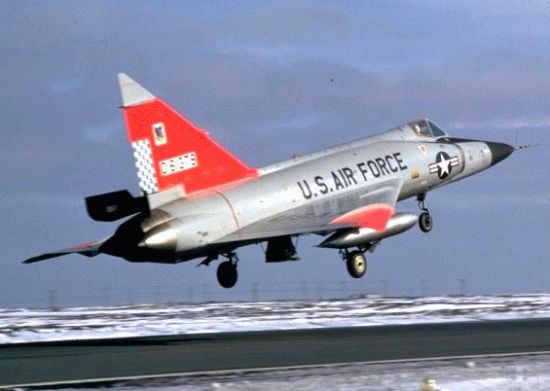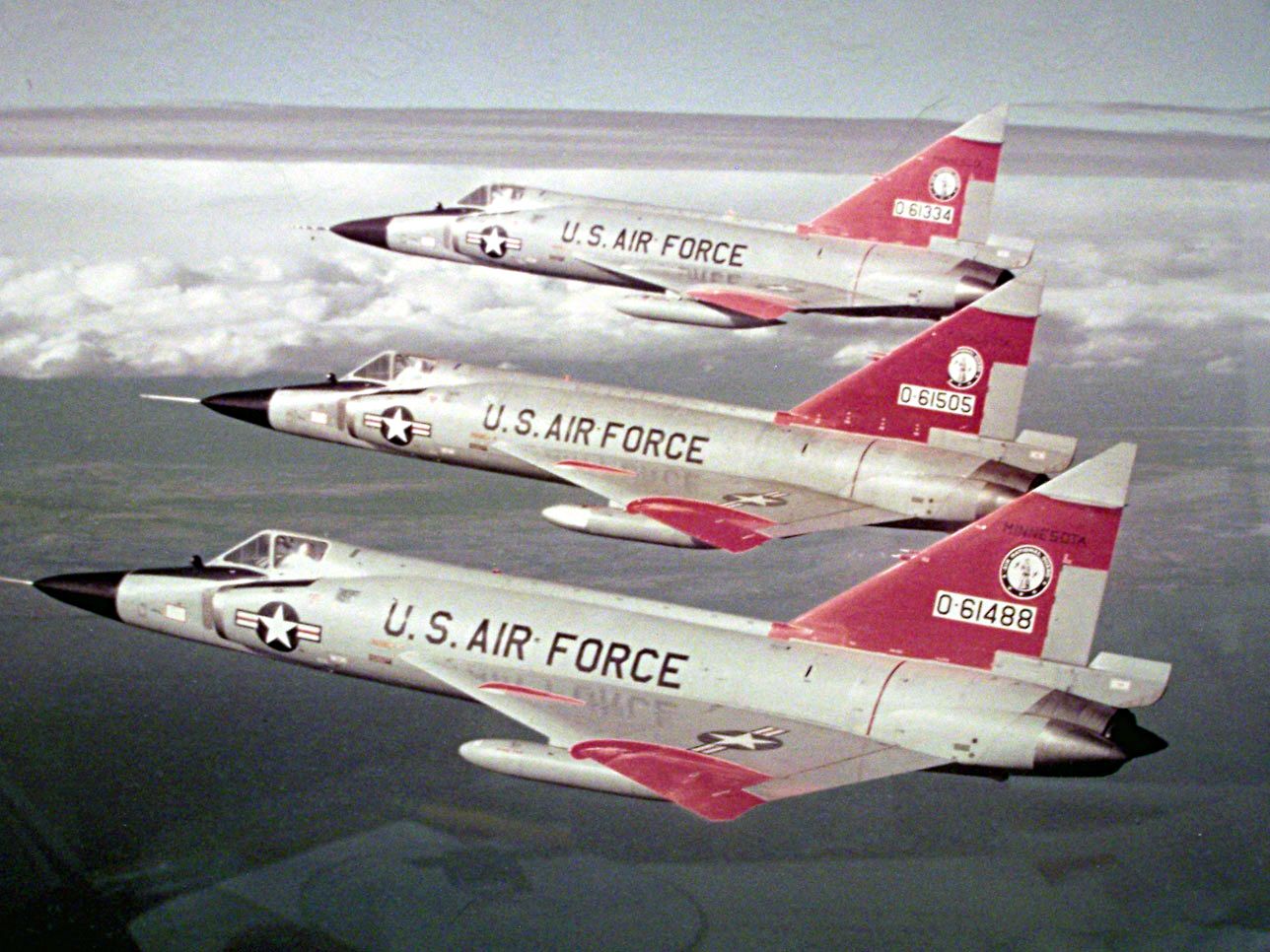The Convair F-102 Delta Dagger was a groundbreaking aircraft for the United States Air Force (USAF) and a vital component of America’s air defense during the Cold War. As the first operational supersonic interceptor in the USAF, the F-102 played a crucial role in defending U.S. airspace from potential Soviet bomber threats. Known for its distinctive delta wing design and cutting-edge technology, the F-102 Delta Dagger set the stage for the development of more advanced interceptors and helped shape the future of air combat.
Development and Design
The origins of the F-102 Delta Dagger trace back to the early 1950s when the United States was in the midst of the Cold War with the Soviet Union. The USAF needed a high-speed interceptor capable of defending North America against Soviet bombers, particularly the long-range Tupolev Tu-95. To meet this need, Convair was tasked with developing a supersonic aircraft that could intercept and destroy enemy bombers before they could reach their targets.
The F-102’s design was revolutionary for its time. The aircraft featured a delta wing configuration, which was a relatively new concept in the early 1950s. The delta wing offered several advantages, including high-speed performance, increased stability, and better handling at high altitudes. This design choice allowed the F-102 to achieve supersonic speeds and operate effectively at the altitudes necessary for its mission.
One of the most significant challenges during the F-102’s development was achieving supersonic flight. Early prototypes of the aircraft struggled to break the sound barrier due to aerodynamic inefficiencies. To overcome this, Convair engineers applied the “area rule” to the design, which involved narrowing the fuselage at certain points to reduce drag and improve aerodynamic performance. This modification, known as the “Coke bottle” shape, enabled the F-102 to reach supersonic speeds and meet the USAF’s performance requirements.

Armament and Capabilities
The F-102 Delta Dagger was designed primarily as an interceptor, and its armament reflected this role. Unlike previous fighters that relied on guns, the F-102 was equipped with an internal weapons bay that housed air-to-air missiles. The aircraft was armed with six AIM-4 Falcon missiles, which were a mix of infrared and radar-guided variants. These missiles were designed to engage enemy bombers at long ranges, making the F-102 a formidable defender of U.S. airspace.
In addition to the AIM-4 Falcon missiles, the F-102 could also carry 2.75-inch unguided rockets stored in the same internal bay. These rockets were intended for close-range engagements and provided an additional layer of firepower against incoming threats. The absence of traditional guns marked a shift in aerial combat philosophy, as the F-102 relied entirely on its missiles and rockets to neutralize enemy aircraft.
The F-102 was also equipped with a cutting-edge radar and fire-control system, which allowed pilots to detect and track enemy bombers at long distances. This system, known as the MG-10, was one of the first integrated radar systems in a U.S. aircraft, and it significantly improved the F-102’s effectiveness as an interceptor. The MG-10 enabled pilots to engage multiple targets simultaneously and provided a higher degree of accuracy in missile targeting.

Operational History
The F-102 Delta Dagger entered service with the USAF in 1956 and quickly became a key component of the Air Defense Command. Its primary mission was to intercept and destroy Soviet bombers before they could penetrate U.S. airspace. The aircraft was deployed across the United States and in several overseas bases, including Europe and Asia, as part of the USAF’s global defense strategy.
During the height of the Cold War, the F-102 was on constant alert, ready to scramble at a moment’s notice in response to potential threats. While the F-102 never engaged in combat with Soviet bombers, it played a crucial role in deterrence by maintaining a robust air defense capability. The mere presence of the F-102 and its ability to intercept incoming bombers served as a powerful deterrent against potential Soviet aggression.
The F-102 also saw limited combat during the Vietnam War. Although it was primarily designed as an interceptor, the Delta Dagger was adapted for ground-attack missions in Vietnam. Armed with rockets and bombs, the F-102 conducted close air support missions and provided air cover for ground troops. However, its effectiveness in this role was limited, and it was eventually replaced by more specialized aircraft like the F-4 Phantom II.

Legacy and Influence
The F-102 Delta Dagger served as the backbone of the USAF’s air defense forces throughout the late 1950s and early 1960s. It was eventually phased out of front-line service as more advanced interceptors like the F-106 Delta Dart were introduced. However, the F-102’s impact on aviation history is undeniable. It was the first operational aircraft to successfully incorporate supersonic flight, delta wing design, and an integrated radar and missile system, paving the way for future generations of interceptors.
The F-102 also played a critical role in shaping U.S. military strategy during the Cold War. Its presence as a supersonic interceptor provided the USAF with a credible defense against Soviet bombers and helped maintain the balance of power between the two superpowers. The lessons learned from the F-102’s development and operational history influenced the design of subsequent aircraft, including the F-106 and the F-4 Phantom II.

Conclusion
The Convair F-102 Delta Dagger remains a symbol of American innovation and determination during the early years of the Cold War. As the first supersonic interceptor in the USAF, it represented a significant technological leap forward and set new standards for air defense. While it may have been overshadowed by later, more advanced aircraft, the F-102’s contributions to national security and its role in the evolution of jet fighters are still remembered and celebrated today. The Delta Dagger’s legacy lives on as a testament to the ingenuity and dedication of those who designed, built, and flew this iconic aircraft.





